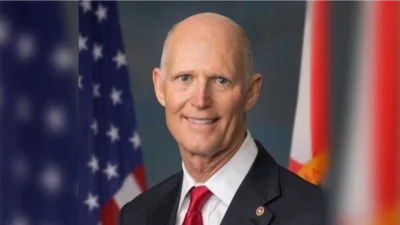Division A: Defense
2018 enacted level, base: $589.5 billion
2018 enacted level, OCO: $ 65.2 billion
2019 budget request, base: $607.4 billion
2019 budget request, OCO: $ 68.07 billion
2019 Conference base: $606.5 billion
2019 Conference, OCO: $ 67.8 billion
The Defense division of the conference report provides:
* $150.7 billion for Military Personnel, which is $4.9 billion more than the FY 2018 enacted level and $2.1 billion below the request
** This funding level would increase end strength by 15,600 active and 800 Guard/Reserve
** The bill increases military pay by 2.6%, which was the requested level
* $243.2 billion for Operations and Maintenance, which is $4.6 billion more than the FY 2018 enacted level and $5.1 billion below the request
* $147.9 billion for Procurement, which is $3.6 billion more than the FY 2018 enacted level and $4.6 billion above the request
* $96.1 billion for Research and Development, which is $6.9 billion more than the FY 2018 enacted level and $3.7 billion above the request
* $1.2 billion for Environmental Restoration Accounts, $13.2 million more than FY 2018 enacted level and $184.4 million above the request
* $6.5 billion for the European Reassurance Initiative, which is $1.8 billion above the FY 2018 enacted level and the same as the request
* $4.9 billion for the Afghanistan Security Forces Fund, which is $254 million above the FY 2018 enacted level and $279 million below the request
* $1.35 billion for Counter-ISIL Train and Equip, which is $417 million below the FY 2018 enacted level and $48 million below the request
* $1.3 billion for the National Guard and Reserve Equipment Account for reserve component equipping needs, which is the same as the FY 2018 enacted level and $1.3 billion above the request
* $500 million for an Intelligence, Surveillance and Reconnaissance (ISR) Fund for combatant commands and military services to use for ISR requirements which is $200 million below the FY 2018 enacted level and $500 million above the request
* $40 million for Historically Black Colleges and Universities/Minority Serving Institutions Basic Research Programs, $10 million above the request and equal to the FY 2018 enacted level
* $34.4 billion for Defense Health requirements - $400 million below the FY 2018 enacted level and $400 million above the budget request. This includes $1.47 billion for congressionally directed medical research programs;
** $374 million for cancer research,
** $125 million for traumatic brain injury and psychological health research,
** $130 million for breast cancer research
** $100 million for prostate cancer; and
** $50 million for the Joint Warfighter Medical Research program for battlefield medical needs
* $500 million for the Israeli Missile Defense Cooperative program, which is equal to the request, and $200 million below the enacted level, conforming to the MOU between the United States and Israel. The bill also includes $47.5 million for the U.S. Israeli Joint Anti-Tunneling Research Technology Initiative which is equal to the FY 2018 enacted level and $47.5 million above the request
* $250 million for the Rapid Innovation Fund to incorporate small business developments into DoD programs, which is the same as the FY 2018 enacted level and $250 million above the request
* $270 million for facilities maintenance of Department of Defense schools, which is $35 million above the FY 2018 enacted level and $270 million above the request
* $35 million for continued implementation and expansion of the Sexual Assault Special Victim’s Counsel Program which is equal to the FY 2018 enacted level and $8.8 million above the request
* $250 million in OCO for Ukraine, which is $50 million more than the FY 2018 enacted level and $50 million above the request
OUTCOME OF POLICY PROVISIONS
* Includes language that would provide death gratuities for troops in case of a government shutdown
* Includes language that will limit the Department of Defense’s ability to expend funds for cloud computing activities until 90 days after the Department provides a comprehensive strategy for cloud computing across the Department and a plan to provide more transparency on funding
* Prohibits the use of funds in Syria and Iraq in contravention of the War Powers Resolution
* Prohibits funding to propose, plan for, or execute a new BRAC round
* Prohibits funding to transfer or release Guantanamo Bay detainees to the U.S.; for construction, acquisition, or modifying facilities in the U.S. to house detainees; for transfer of detainees except in accordance with National Defense Authorization Act; or to close or transfer Guantanamo Bay from DoD’s jurisdiction
* Includes language which limits assistance to Afghan Security Forces who have committed gross violations of human rights
* Includes language in the Statement directing lead screenings for child dependents at 12 and 24 months as well as a GAO report addressing levels of lead in military housing
* Includes language limiting transfer authority for reprogramming funds in FY 2019
* Includes language limiting the Defense Secretary’s ability to provide equipment for ceremonial honors, a.k.a. parades, if the support degrades readiness
Division B: Labor, Health and Human Services, Education, and Related Agencies
2018 Enacted level: $177.100 billion
2019 Budget request: $167.439 billion
2019 Conference report: $178.076 billion
The Labor, Health and Human Services, Education division of the conference report provides:
* $39.1 billion for the National Institutes of Health (NIH), which is $2 billion more than the FY 2018 enacted level
* $4.4 billion for programs to respond to the opioid crisis, including prevention, treatment, surveillance, research to develop non-opioid pain medication, behavioral health workforce training, and support for children and families, which is $0.1 billion more than the FY 2018 enacted level
* $7.9 billion for the Centers for Disease Control and Prevention (CDC), which is $125 million more than the FY 2018 enacted level for CDC’s public health programs and activities
* $4.0 billion for CMS Program Management, which is the same as the FY 2018 enacted level
* $1.6 billion in discretionary funding for Community Health Centers, which is the same as the FY 2018 enacted level. Combined with $4.0 billion in mandatory funding, total funding for Community Health Centers is $5.6 billion, which is $200 million more than the FY 2018 enacted level
* $1.1 billion for Health Resources and Services Administration (HRSA) Health Professions, which is $36 million more than the FY 2018 enacted level
* $678 million for the Maternal and Child Health Block Grant, which is $26 million more than the FY 2018 enacted level
* $2.3 billion for Ryan White HIV/AIDS Programs, which is the same as the FY 2018 enacted level.
* $286 million for Title X Family Planning, which is the same as the FY 2018 enacted level. The House bill eliminated this program
* $1.9 billion for the Substance Abuse and Mental Health Services Administration (SAMHSA) Substance Abuse Block Grant, which is the same as the FY 2018 enacted level
* $1.5 billion for SAMHSA’s State Opioid Response Grants, an increase of $500 million more than the FY 2018 enacted level
* $150 million for Certified Community Behavioral Health Clinics, which is $50 million more than the FY 2018 enacted level
* $5.3 billion for the Child Care and Development Block Grant, which is $50 million more than the FY 2018 enacted level
* $10 billion for Head Start, which is $200 million more than the FY 2018 enacted level. Of the total increase, $50 million is provided for Early Head Start
* $1.3 billion for Unaccompanied Minor Children, which is level with the FY 2018 enacted level
* $3.7 billion for the Low-Income Home Energy Assistance Program (LIHEAP), which is $50 million more than the FY 2018 enacted level
* $10.3 million for the Domestic Violence Hotline, which is $1 million more than the FY 2018 enacted level
* $725 million for the Community Services Block Grant, which is $10 million more than the FY 2018 enacted level
* $907 million for Senior Nutrition programs, which is $10 million more than the FY 2018 enacted level
* $338 million for Agency for Healthcare Research and Quality (AHRQ) research activities, which is $4 million more than the FY 2018 enacted level
* $1.9 billion for research, advanced development, and stockpiling medical countermeasures through the Biomedical Advanced Research and Development Authority (BARDA), BioShield, and the Strategic National Stockpile, which is $50 million more than the FY 2018 enacted level
* $260 million for Pandemic Influenza Preparedness, which is $10 million more than the FY 2018 enacted level
* $15.9 billion for Title I Grants to School Districts, which is $100 million more than the FY 2018 level. No funding for private school vouchers or “public school choice" is included
* $12.4 billion for Special Education Part B State Grants (IDEA), which is $87 million more than the FY 2018 enacted level
* $1.2 billion for 21st Century Community Learning Centers, which is $10 million more than the FY 2018 enacted level
* $107 million for Magnet Schools, which is $2 million more than the FY 2018 enacted level
* $1.2 billion for Student Support and Academic Enrichment Grants program, which is $70 million more than the FY 2018 enacted level
* $130 million for Education Innovation and Research, which is $10 million more than the FY 2018 enacted level. Of the total amount, $60 million is included for a new STEM and Computer Science competition
* $1.4 billion for Impact Aid, which is $32 million more than the FY 2018 enacted level
* $1.3 billion for Career and Technical Education, which is $70 million more than the FY 2018 enacted level
* $656 million for Adult Education, which is $25 million more than the FY 2018 enacted level
* $1.1 billion for TRIO, which is $50 million more than the FY 2018 enacted level
* $360 million for GEAR UP, which is $10 million more than the FY 2018 enacted level
* $687 million for Aid for Institutional Development and Minority-Serving Institutions programs, which is $6.8 million more than the FY 2018 enacted level
* $350 million for a discretionary relief fund for borrowers to receive public service loan forgiveness, which is the same as the FY 2018 enacted level
* Sufficient funding to support an increase in the maximum Pell Grant award by $100 to $6,195
* $125 million for the Office for Civil Rights at the Department of Education, which is $8 million more than the FY 2018 enacted level
* $160 million for Registered Apprenticeship Grants, which is $15 million more than the FY 2018 enacted level
* $2.8 billion for Workforce Innovation and Opportunity Act Grants to States, which is level with the FY 2018 enacted level
* $1.7 billion for Job Corps, which is level with the FY 2018 enacted level
* $300 million for Veterans Employment and Training, which is $5 million more than the FY 2018 enacted level
* $1.6 billion for worker protection agencies at the Department of Labor (Occupational Safety and Health Administration, Mine Safety and Health Administration, Wage and Hour Division, and others), which is $7.5 million more than the FY 2018 enacted level
* $86 million for International Labor Affairs, which is the same as the FY 2018 enacted level
* $445 million as an advance appropriation for the Corporation for Public Broadcasting (CPB), which is level with the advance funding provided in FY 2018, and $20 million to fund technological infrastructure upgrades
* $1.1 billion for the Corporation for National and Community Service (CNCS), which is $19 million more than the FY 2018 enacted level
* $242 million for the Institute of Museum and Library Services, which is $2 million more than the FY 2018 enacted level
* $274 million for the National Labor Relations Board (NLRB), which is the same as the FY 2018 enacted level
* $12.9 billion for the Social Security Administration’s operating budget, which will enable a substantial increase in funding for SSA’s operating expenses in comparison to the FY 2018 enacted level
OUTCOME OF POLICY PROVISIONS
The conference report maintains policies advanced by House Democrats to hold the Administration accountable for its cruel policy of family separation at the border, including directing the Secretary of HHS to submit a family reunification plan to Congress and funding for trauma counseling services for separated children. These and other provisions increase transparency and oversight of HHS and help provide care and services to children in HHS custody.
The conference report continues policy provisions that will:
* Block a change in reimbursement policy for breast cancer screening, mammography, and breast cancer prevention. The provision will ensure these procedures continue to be covered by insurers without a copay.
* Allow State or local public health departments to use federal funds for support services related to syringe exchange programs, as long as the federal funds do not purchase the syringes.
The conference report eliminates two longstanding provisions that blocked school districts from spending Department of Education funding on transportation to overcome racial imbalance.
The conference report does not include new policy riders from the House majority bill, which would have:
* Blocked funding to administer the Affordable Care Act.
* Blocked funding for Title X Family Planning programs.
* Blocked funding for Planned Parenthood clinics.
* Blocked funding for fetal tissue research.
* Blocked the NLRB’s Joint Employer standard.
* Added the text of H.R. 644, the Conscience Rights Act, which would limit women’s access to health care services and potentially put some women’s lives in danger, while creating a new right to private litigation.
* Overridden the Flores settlement and authorized the indefinite detention of immigrant children.
* Authorized discrimination in foster care and adoption based on religion, sexual orientation, gender identity and marital status.
The conference report does not include a provision sought by House Democrats to make clear Department of Education funds cannot be used to arm teachers.
Source: U.S. Department of HCA









